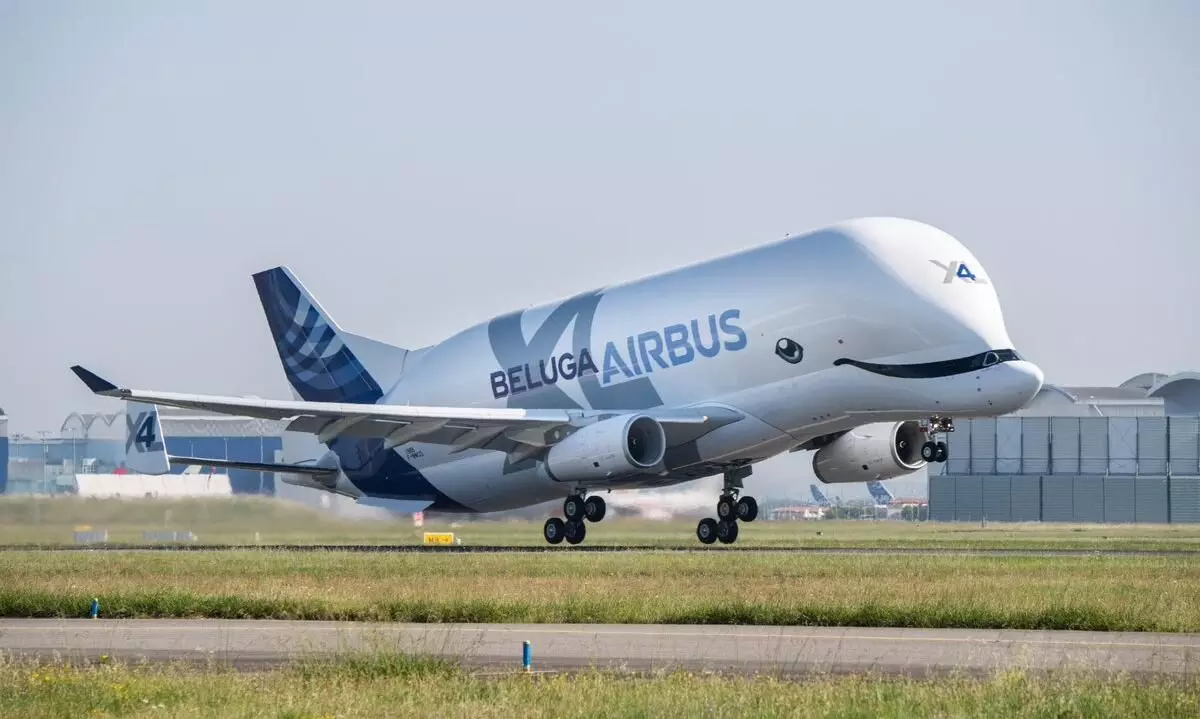
Airbus Beluga Transport gets Air Operator Certificate
With AOC secured, Airbus Beluga Transport gains freedom in flight operations.

Airbus has obtained an Air Operator's Certificate (AOC) for its new subsidiary Airbus Beluga Transport. The aircraft manufacturer launched its outsized air-cargo service, Airbus Beluga Transport (AiBT), in January 2022, operated by Airbus Transport International (ATI). Now that it has its own AOC, AiBT can operate the flights on its own.
The airline applied for an AOC in June 2023 and completed the last step— obtaining the Continuous Airworthiness and Maintenance Organisation(CAMO) certificate - in November 2023.
“For our final dossier, we had been compiling many documents during the first half of this year, encompassing flight safety, flight operations, ground operations, technical operations, and crew Training,” says Benoît Lemonnier, Managing Director, AiBT. “ We submitted it at the end of June 2023 following which we answered questions and fine-tuned over the summer. Of course, we didn't start from scratch, since we had built on the documentation and processes of ATI.”
To enhance support for the airline, Airbus has established a new main office headquarters closer to Blagnac Airport. The company has set up an aircraft operating base at Francazal Airport, which is located in the southwest suburbs of Toulouse.
The other major part was the official transfer of the BelugaSTs from ATI's fleet register to AiBT (leased from Airbus). AiBT currently has three aircraft in its fleet with a fourth scheduled for induction in 2024.
AiBT will launch its services by operating flights within the existing Airbus network. “It’s quite important that we don't start with long complex worldwide flights but rather that our flying crews and ground teams gain experience with short flights contracted by ATI,” says Lemonnier. “These flights commenced in November for routes to Saint Nazaire, Hamburg, Bremen, Sevilla etc. This approach allows AiBT to test its internal procedures and to train everyone, especially the new pilots before it resumes its core business of long-haul missions.”
With over two decades of experience within the Air France Group, Olivier Schneider has recently joined AiBT in the role of Head of Flight Operations in May 2023. Schneider has served as a captain, instructor, and, most recently, as the Head of Flight Operations for one of the group's regional airline subsidiaries.
To expand its services, AiBT has collaborated with Airbus to invest in the BelugaST, certifying it for a wider range of payloads. While the BelugaST is unique to Airbus, requiring pilots to be trained specifically for this aircraft, AiBT has hired 12 pilots from ATI for an interim period of three years.
Additionally, pilots from regular goods carriers cannot simply transfer to a Beluga operation because the mission and flight profiles are so different, necessitating additional training and type-rating. Says the press release.
The Beluga fleet was designed for the European network, with sectors lasting no more than four hours. For AiBT’s long-haul flights, its crews will have to fly several ‘legs’ before reaching their destination. As per the released statement.
“That will be something new for many experienced long-haul aircrew who are used to flying from Europe to Singapore, in 13 hours from start to finish. Whereas with the Beluga we are talking about four legs spread over two days to get there'', says Oliver.
The pilots are also required to fly some missions at 20,000 feet at around Mach 0.7, as opposed to the typical 35,000-foot cruising altitude and Mach 0.8 speed of regular freighters. The reason for this is that certain payloads, particularly helicopters, are not generally certified for exposure to altitudes greater than 20,000 feet - a constraint that must be maintained while they are transported in the Beluga's unpressurised cargo hold. According to the details outlined in the press release.
Additionally, Belugas will experience a variety of weather conditions at lower cruise altitudes that regular air freight aircraft would not encounter higher up at 35,000 feet. Says the official release.
Another distinction from a typical freighter mission is the ground operation: The Beluga's main cargo deck is quite high from the ground, necessitating a great deal of coordination and a special crew to unload the payload at the destination which is a critical part of the operation that takes several hours to complete.
The Airbus Beluga is a variant of the Airbus A300 aircraft. The aircraft has got this nickname, after the Beluga Whale. The aircraft looks unique because of its design compared to other freighter aircraft. The newer version of Beluga is known as Beluga XL. It was developed by Airbus in the year 2010 and is based on the Airbus A330-200, The Beluga XL will replace the older A300-600ST Beluga fleet. The XL has a payload capacity of 51 tonnes and a range of 4,000 km.

